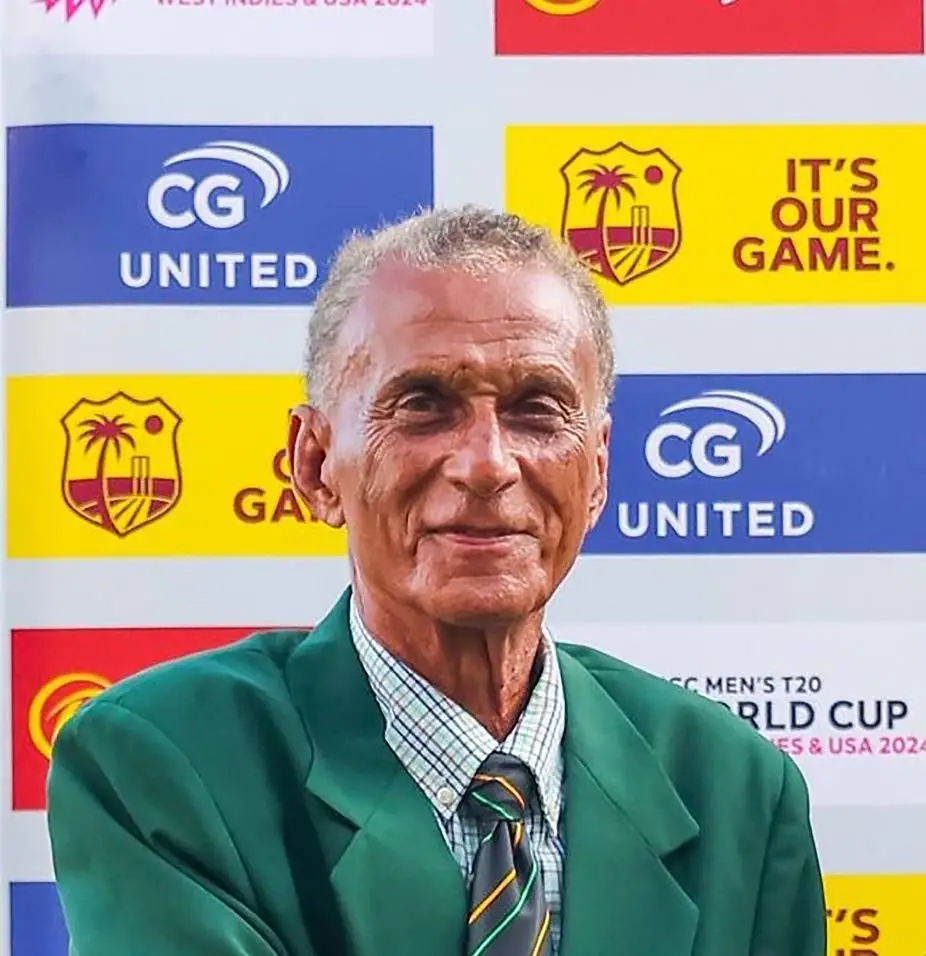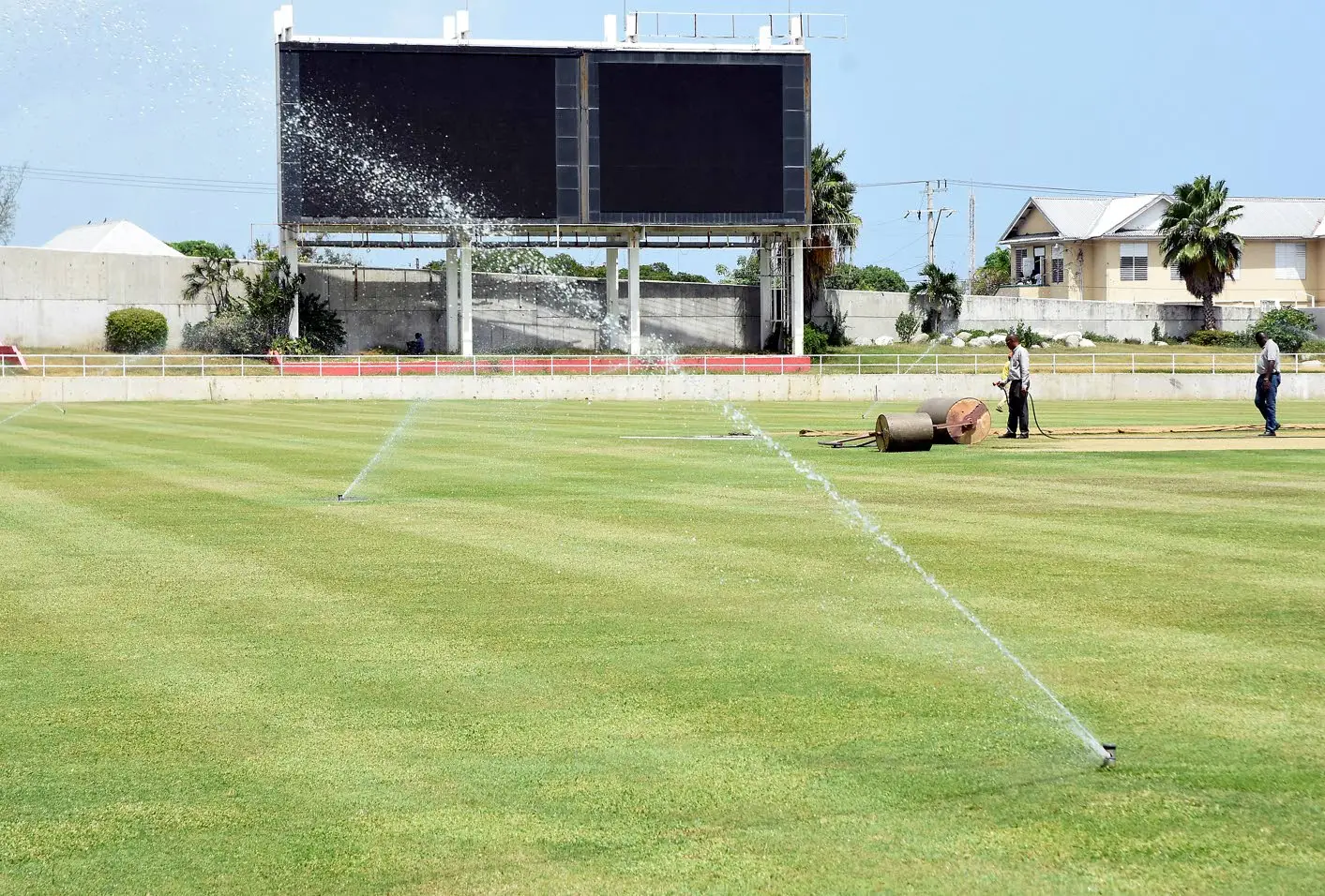
‘Fit for purpose’
JCA president shares short-term Sabina Park upgrades; stakeholders cite other needs
Jamaica Cricket Association President Dr Donovan Bennett says new lights and a scoreboard will be installed at Sabina Park ahead of increased activity for the venue over the next two years.
On Monday, Bennett told the Jamaica Observer that negotiations are under way for a new franchise to represent Jamaica in the Caribbean Premier League (CPL) T20 competition, which is expected to start in August.
That means Sabina Park, which would host this team’s home games, would need upgrades, especially to its lighting, with many CPL games occurring at night.
Bennett also said Sabina Park would host one Test match and two T20 games when Australia visits the island in June. The West Indies will also host games against Pakistan and India in 2026 and 2027, respectively.
“That now has put us into a mode where we have to get a proper scoreboard,” Bennett told the Observer. “That scoreboard should be here by the end of March. It’s a gift from the Government of India.
“Through the Sports Development Foundation, we are getting the help to reinstall lights at Sabina.”
Bennett says blown bulbs mean the lights are not bright enough for night games.
“Right now, we have incandescent lights, some of which are blown, and the lux readings are way down — not good enough for international cricket. We have to do a complete makeover of the lighting system — putting in LED bulbs instead of incandescent ones to bring the lux (unit of measurement for lighting) level to where we want it to be. Right now, it’s about 13,000 and we need to get up to about 25,000.”
Jamaica declined an offer to host ICC Men’s T20 World Cup games at Sabina Park last year because Sport Minister Olivia Grange said the Government could not find the estimated $450 million needed to renovate the stadium to meet the requirements for games at that level.
Bennett says those required upgrades are still out of reach but new lights and a scoreboard are feasible short-term objectives.
“The upgrades that are necessary are what I told you,” he said. “That is what we need to bring night cricket back to Sabina. We expect that to cost about $35 million, to get the lights up and going. Of course, there are other things to do but the scoreboard and the lights are paramount right now. So, we want to get those done before we move on.”
Bennett admits other repairs are needed at the venue such as sandblasting to rid the metal rails at the north stand of rust and repainting of that area.
“We don’t have the money to do that now, so we are concentrating first on the lights and the scoreboard because we have to get those in before June to facilitate the Australian tour.”
Although these plans are being made to facilitate more international cricket, Sabina Park is a multi-purpose venue and hosts football matches and parties. This aids the stadium in raising funds for maintenance.
If and when that $450 million becomes available to make those upgrades, there are several changes some stakeholders agree are needed.
One key football stakeholder is Professional Football Jamaica, the organiser of the Jamaica Premier League. Its chief executive officer Owen Hill says he is pleased to have matches at the stadium but he wants it to become more accommodating to football.
“For me, the understanding is that we need to have a fit-for-purpose venue,” he told the Observer. “In the case of Sabina, it is fit for purpose for cricket. So, what you find is that while it has a grass pitch and it has stands, it doesn’t factor in other sports that would need fit-for-purpose facilities.”
Hill cites Major League Soccer (MLS) in the United States moving away from its clubs sharing baseball and American football venues with those respective teams in their cities for the same reason. He also mentions that Sabina Park’s facilities such as its locker rooms for teams and media area are set up for cricket and not other sports. These can be found upstairs at the north stand.
“After a while, they weren’t getting the true essence of the sport, so they had to go fit for purpose,” Hill says regarding MLS teams now playing in “soccer-specific” stadia. “In Sabina’s case, I don’t think anybody is asking them to go fit for purpose – or if they can, because again, you look at what number of games are being played, what the economic viabilities are, etcetera. That’s a decision they have to make internally.”
Hill mentioned parking facilities as the first major issue he would like addressed.
“The first major issue with Sabina Park is there is none whatsoever for fans,” he said. “So what you find is a major part of any patron experience is their parking. You must have some area designated and as it is now, relationships are formed with the schools in and around the community or smaller-scale, makeshift parking areas, because they’re improvising.
“For a venue like that, if you’re going to be hosting upwards of 4,000 spectators, you need parking. It’s a major issue – whether it be close enough to the venue or you shuttle, it’s a big issue at Sabina Park.”
Denver Holt, a director for the I Love Soca festival, which has regularly been hosted at Sabina Park in recent years, agrees with Hill about the parking situation.
“The primary challenge we faced was parking,” he said. “A significant number of patrons end up parking on the road, which is not ideal because at the end of the day, when we’re delivering an experience for patrons, we want them to feel comfortable from the moment they leave their homes, right until they get back in.
“We don’t want patrons to be parking on the roads, but with limited spaces, it inevitably happens.”
Holt says when planning the event, he and his team could only realistically look to create 500 spots in and around the venue for patrons. They would also be forced to shuttle others to the venue, which he says is costly.”
Holt’s other concern is security.
“Sabina needs proper entry points to access the venue,” he said. “More times than not, you find that this has to happen in the roads or the driveways, which would mean we would have to build out and get crowd control barriers to streamline the entry process.”
Holt says when organisers rent a venue, they expect such security facilities to be provided as part of the agreement. Hill agrees, again citing protocols in the USA.
“For us as tenants, we had issues with security over the years and it’s kind of like the abdication of responsibilities to the tenants themselves,” he said. “It’s not to say people don’t feel safe. What I’m saying is, if you’re talking about what upgrades are to be done, you need to make sure that security is a major part of that upgrade. One of the ways it’s done, especially in this day and age, is through technology. Cameras, body scanners, and facilities that will be of such where you reduce the human element and once you do that, it becomes a little less cumbersome. I speak about the entrance to the venue as patrons — no knives, no firearms…
“International venues generally come with turnkey solutions. If you’re hosting a concert at Madison Square Garden, they will offer you the venue and its facilities turnkey, or if you have your team, you can then replace that set, and in some cases, you can’t because they say this is what the venue comes with standard.”
Hill also mentions a lack of ticket booths as an issue with venue access.
“A venue like that needs close-circuit television,” he said. “What it does is ensure your safety as a patron, that if anything happens, there is the possibility for some reprieve,” he said.
Sabina Park, which was opened in 1895, received its last major renovation almost two decades ago ahead of the ICC Men’s One Day International World Cup which it hosted games for in 2007.


























